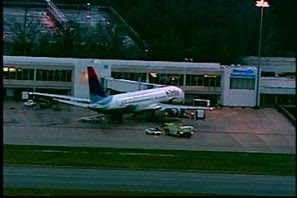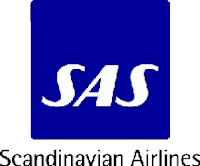 Aircrew Buzz
Aircrew Buzz [the blog you are reading] recently had its third birthday. To mark that milestone, I decided to depart from posting the usual fare, to talk about the blog itself, and to publicly answer some readers' questions.
Among the questions I am asked most frequently by readers:
- Are you a pilot?
- What airline do you work for?
- How do you decide what stories to write about?
- Where do you get your information?
No, I'm not a pilot, nor do I work for an airline, a union, or a government agency. I'm an independent research psychologist who has spent quite a number of years learning everything I can about people who work in the civilian aviation industry, and especially those who fly for a living, i.e., pilots and cabin crew. Along the way, I became an aviation news junkie.
I am interested in aviation news mostly in regard to its impact on the lives of the crew members I have come to know. Thus, I choose to write stories in
Aircrew Buzz about topics that I think will be interesting to crew members themselves. I focus on aspects of aviation news stories that are about crew, or that will affect them, thus the blog's subtitle:
Crew-centered news and commentary.
It is my practice to consult multiple sources of information before I write most stories. I get some of that information from mainstream news media, and even more from established aviation news outlets, but much of what I write about is based on information that becomes available from government agencies such as the FAA and the NTSB, and their counterparts in other countries. When I write about aircraft accidents and safety incidents, for example, I often include factual information from official accident investigation reports.
My background as a research scientist influences my writing habits. I always document my sources. I try my best to stay away from hearsay, or in any case, to identify it as hearsay when that is what it is. I give as many details as I can, but I avoid sensationalizing and speculating. The non-aviation press does enough of that!
I also follow news releases and other information provided by unions, airlines, aircraft manufacturers and other businesses related to aviation. These often are good sources of news about labor issues, contract negotiations, regulatory issues, and technological developments of interest to crew members.
I'm based in the U.S., but aviation is a global business, and
Aircrew Buzz has a global audience. (According to the traffic statistics,
Aircrew Buzz was read by people in 145 different countries during the past month, for example.) Thus, I feature aviation news from around the world, not just North America.
I have said that my primary target audience is the crew members themselves. That's who I have in mind when I choose which topics to write about, and what to say. If I have a slant or a bias, it is to adopt the perspective of crew members. At the same time, it has become apparent that the readership of
Aircrew Buzz is much broader now than it used to be.
A telling factor is that, during its early days, most visitors to
Aircrew Buzz arrived as 'direct' traffic -- that is, they typed the URL directly into their browsers, or clicked through from their bookmarks. The rest of the traffic used to come from click-throughs on links in directories and other websites, plus a small number from search. Nowadays, well over two-thirds of the traffic to
Aircrew Buzz comes from search, consistently.
The number of
Aircrew Buzz readers has grown tremendously over the past three years. Back in early 2005 when the blog was launched, it drew an audience of a couple hundred per month. In three years' time, that readership has steadily grown to many thousands per month, and that's just those who come to the blog itself.
Since about this time last year,
Aircrew Buzz has been syndicated by two agencies that distribute the content to other websites. Content from
Aircrew Buzz now appears regularly on the Commercial Aviation page of McGraw Hill's
Aviation Week, and individual articles are distributed through syndication to
Reuters, the
Chicago Sun-Times,
LexisNexis,
EBSCO and others. As a result, the total readership for a given article is very often in the tens of thousands, and on occasion, over 100,000.
In sum, in its three years of existence,
Aircrew Buzz has become a nice little success story. It has spawned two companion news blogs,
Professional Pilot News and
Cabin Crew News, which are doing nearly as well as
Aircrew Buzz. These spin-offs are syndicated now, as well.
I believe the success and growth of all three has hinged on the support of a solid core of loyal readers who visit regularly and stay in touch with me. They give me valuable feedback, and they tell their flying partners about my aviation news blogs. To them I say, "Thank you so much!"
 A press statement issued today by the London Biggin Hill Airport identified the pilot in command of the accident aircraft as Mike Roberts. The press statement said this about Mr. Roberts:
A press statement issued today by the London Biggin Hill Airport identified the pilot in command of the accident aircraft as Mike Roberts. The press statement said this about Mr. Roberts:


















